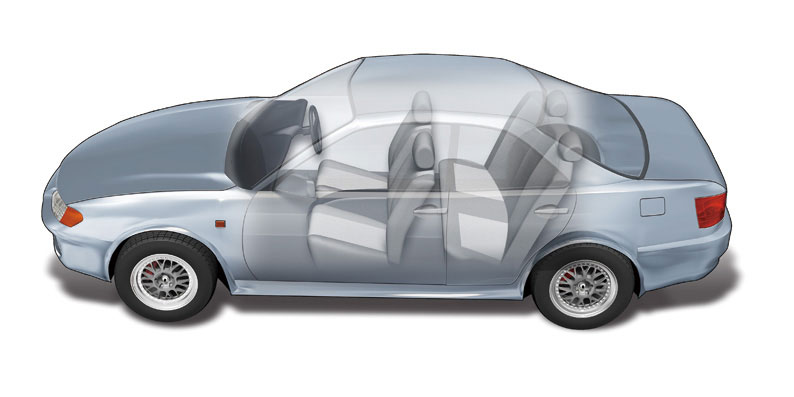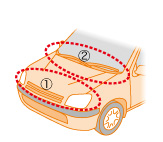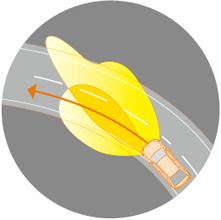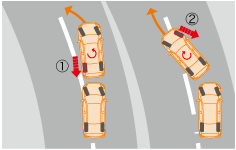niponica is a web magazine that introduces modern Japan to people all over the world.
2013 No.10

To read the e-book you need to have JavaScript enabled in your browser and a free Flash Player plug-in from Adobe Systems Inc. installed.
Quality with a Japanese Flair

Japanese Cars on the Road to Higher Safety Standards
A comfortable ride, infrequent repairs, safe, good on gas… no wonder Japanese cars attract praise worldwide. Drivers trust them because of the manufacturing expertise of the Japanese, who always pursue perfection even in the details. Especially over the last few years, the nation's car manufacturers have been developing technologies that raise automotive safety standards even higher. Here are some pioneering safety systems using advanced technology for Japanese cars.
Illustrations by Kato Aiichi and Oguro Kenji
1Helping drivers avoid collisions

Detection system to reduce the risk of a collision. Cameras and radar systems watch out for a possible front or rear collision.
Collision avoidance technologies use detection devices such as radar and cameras to monitor conditions in front of the car and behind it, and automatically control speed. Collision avoidance brakes warn you of the risk of a collision and apply braking force automatically. The radar cruise control system detects the speed of the car ahead and your following distance, to help you keep a safe distance behind. And the acceleration control system helps you avoid a sudden fast start if you press the accelerator pedal by mistake.
2What if a collision cannot be avoided?
New technologies also aim to reduce injuries to pedestrians and car occupants if a collision occurs. Pedestrian injury can be reduced with a front bumper and hood that crumple to absorb the shock of a collision and diminish the force hitting a pedestrian. The rear pre-crash safety system detects an oncoming collision from behind, activates the back lights to issue a warning, and shifts the occupants' headrests forward to help lessen the collision impact.
Left: Example of a car body structure designed to reduce pedestrian injuries in collisions: (1) The bumper and front part of the hood crumple to reduce injuries, especially to children. (2) The rear part of the hood and wiper bar area crumple to reduce injuries, especially to adults.
Right: When the rear pre-crash safety system detects an oncoming collision from the rear, it shifts the occupants' headrests forward to help lessen the impact to the neck.
3Pursuing precision on the road
Other technologies support and maintain safe driving. The lane departure warning system warns the driver of an unintentional lane change, and supports steering operations. The lateral slip prevention system monitors the movement of the four wheels and applies optimum brake pressure to prevent the car wheels from slipping sideways on curves. The adaptive front-lighting system (AFS) moves the headlights in accordance with steering input and vehicle speed, improving illumination in the direction of travel.
The adaptive front-lighting system (AFS) moves the headlights to provide better illumination to the inside curve and help the driver check for obstacles at night.
How the lateral slip prevention system works: (1) A braking force is applied on the inside rear wheel, to reduce the tendency of the car to swerve to the outside of the curve. (2) A braking force is applied on the outside front wheel, to reduce the tendency of the car to swerve toward the inside of the curve.









Parking made easy
Displays seen on interior monitor. Parking is easy because the driver uses the monitor to verify car position and orientation.
(Photo courtesy of Nissan Motor Co., Ltd.)
The Around View Monitor
The Around View Monitor system uses four cameras—one on each of the side mirrors, one at the front of the car, and one at the rear. The system processes video from those four cameras to display the car's position as if you were seeing it from above. This eliminates blind spots and makes parallel parking and backing into a parking space easy. The system also gives a warning when it detects something moving near the car.